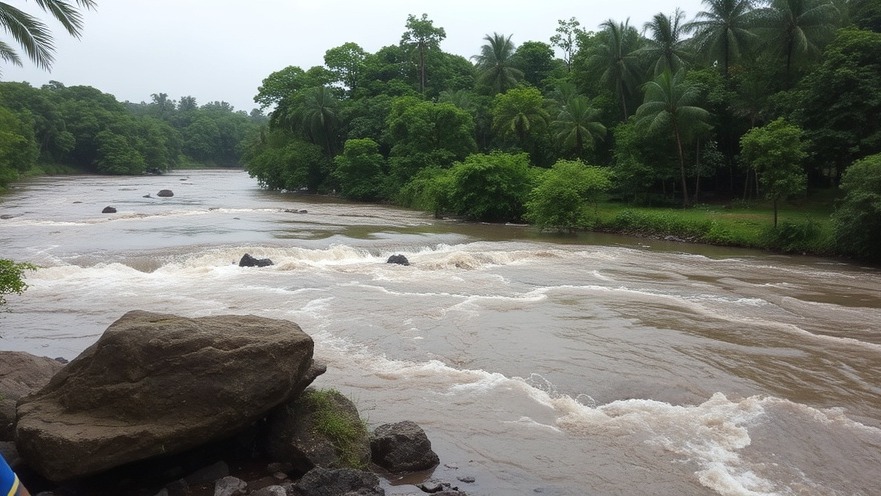
Why the Guadalupe River Flood Caught Many Off-Guard
As the Fourth of July unfolded, the communities surrounding the Guadalupe River in Texas found themselves grappling with devastation as floodwaters surged unexpectedly. Despite existing warnings from the National Weather Service, the rapid escalation of rain and river levels after midnight caught many locals and officials by surprise. In just a matter of hours, torrential rains led to tragic consequences, including over 30 fatalities and many missing.
Understanding the Forecast Failures
The National Weather Service had issued flood watches leading up to the holiday, but those predictions fell short in anticipating the sheer volume of rainfall. Meteorologist Bob Fogarty indicated that while initial forecasts suggested a potential for up to six inches of rain, the reality proved far more severe, with some areas receiving as much as 12 inches. This discrepancy left local leaders and camp organizers grappling with tough questions about how community safety protocols could have been better activated.
Community Response and Emergency Protocols
Despite several flash flood warnings being released throughout the early hours of July 4th, it appears that local officials may not have acted on the alerts in the way needed to effectively protect vulnerable populations, especially the campers. The failure to evacuate ahead of the dangerous floods reveals a significant gap in disaster preparedness. Nim Kidd, chief of the Texas Division of Emergency Management, noted the absence of a proactive approach that could have mitigated the loss of life in a region already familiar with severe weather patterns.
Future Implications and Safety Considerations
This unfortunate event raises important questions about the effectiveness of current alert systems and the responsibilities of local governments in disaster situations. As the community begins the recovery process, there’s an essential opportunity for local officials and agencies to reassess their emergency protocols, especially in areas that regularly face the risk of flooding. Better communication and responsiveness to weather alerts could save lives in future emergencies.
Lessons from Texas Hill Country Floods
This catastrophe underscores the critical need for improved forecasting methods and clearer communication regarding severe weather. Local authorities are urged not only to monitor weather updates but also to ensure that protocols for evacuations are well-established and timely enacted especially when warnings are issued. It’s a matter of life and safety, one that calls for profound attention and action by those in power.
A Community Reflects on Grief and Resilience
Amid the heart-wrenching aftermath of the flood, the community of Kerr County must navigate its grief while fostering resilience. The stories of those lost, including 27 young girls from a Christian summer camp, will remain etched in the memories of those survivors left behind. The emotional toll is heavy, but the community's strength will play a critical role in its recovery. As healing begins, open conversations about improving flood preparedness must be prioritized.
Take Action for Disaster Preparedness
The recent events serve as a wake-up call for Texas and beyond. Residents are encouraged to stay informed and participate in local emergency preparedness meetings. Educating ourselves, as well as others about flood risks and response protocols, can make all the difference in future crises.
 Add Element
Add Element  Add Row
Add Row 



Write A Comment